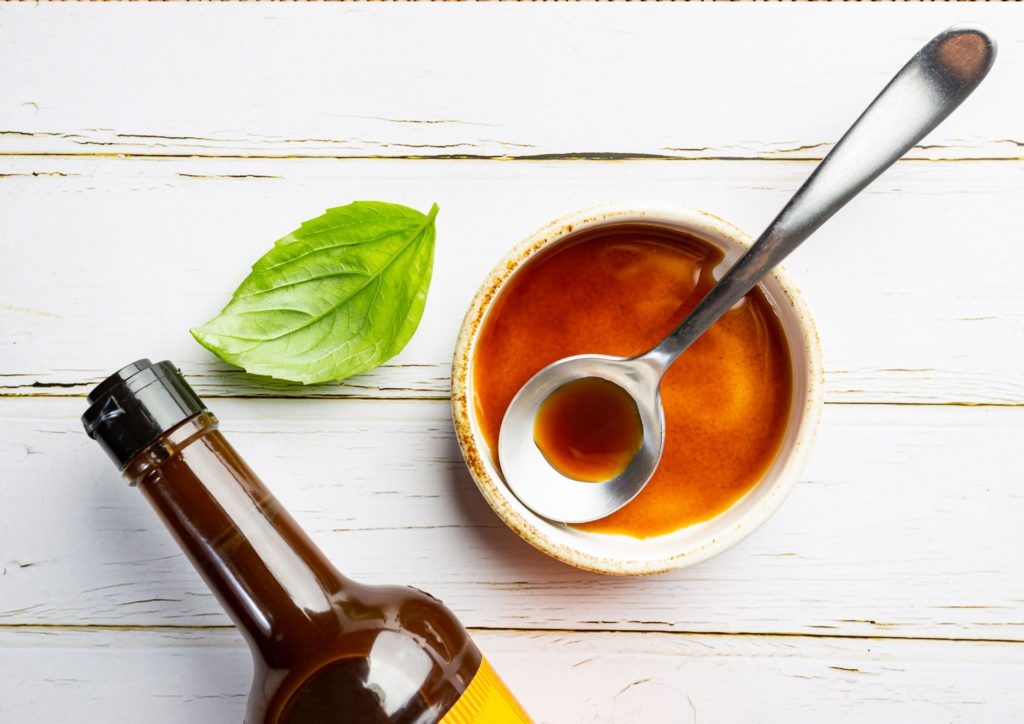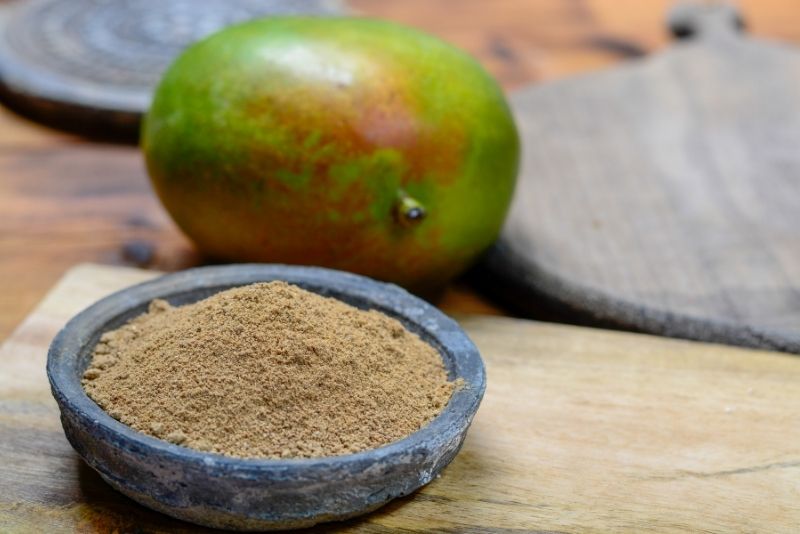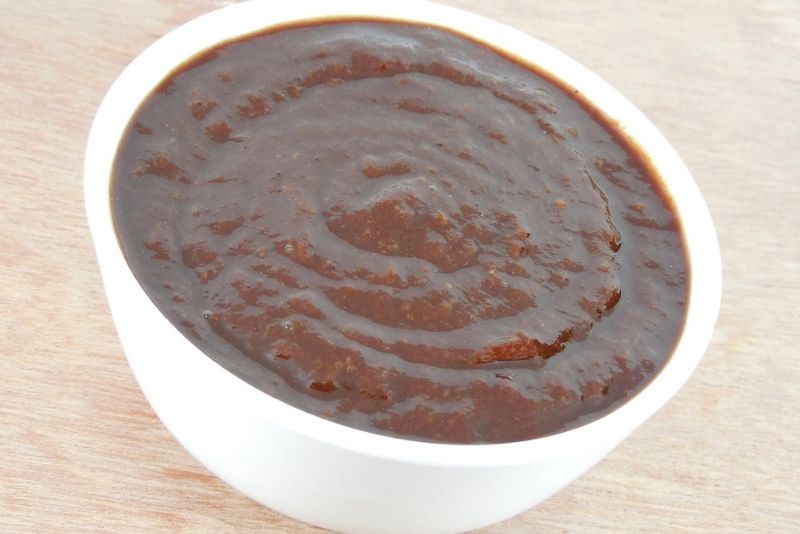Tamarind Concentrate is made from the pulp of the tamarind fruit, which is then cooked down into a thick paste or sauce.
This concentrated form of tamarind makes it easy to add bold flavor to your favorite dishes.
But if you don’t have access to fresh tamarind, or just want an alternative option for adding some extra zing to your food, there are several great substitutes for tamarind concentrate out there.
In this article, I’ll share five of the best tamarind concentrate substitutes that will help you get all those tasty flavors without having to go through the trouble of finding tamarind concentrate or fresh tamarind pods.
Table of Contents
What is Tamarind Concentrate?
Tamarind Concentrate is a thick, brownish liquid with unmatched flavor coming from the fruit of the tamarind tree.
It is used in Asian, African, Mexican, and Indian cooking to enhance the flavor of various dishes. It is also used in soups, chutneys, sauces, and many desserts like halva, ice cream, and even candies.
The taste can vary from acidic sweetness to tanginess depending on how it is prepared or added into the dish. Since tamarind concentrate has a strong flavor, a little bit goes a long way.
In order to get the best flavor from tamarind concentrate, you should dissolve it in liquid before adding it to your dish.
It can be added as it is to hot dishes or sauces but be cautious because it has a tendency to splatter and spit when heated.
5 Best Tamarind Concentrate Substitutes
1. Citrus Juice
One of the best substitutes for Tamarind Concentrate is citrus juice, which packs a similar tangy flavor.
While you can choose any citrus juice to mimic tamarind’s flavor, lime, and lemon work well because they are also sour just like tamarind.
Simply combine the juice with an equal amount of light brown sugar.
For each teaspoon of tamarind concentrate you’re replacing in your recipe, use 2 tablespoons lemon or lime juice and the same amount of brown sugar.
You may also adjust the quantity of sugar and lemon to replace tamarind concentrate, depending on how much concentrate is required for your recipe.
2. Worcestershire Sauce

A popular substitute for tamarind concentrate would be Worcestershire Sauce, which is a rich and tangy sauce with complex flavors that mimic the taste of tamarind.
It’s usually used as a condiment for adding flavor to soups, marinades, and stews that need a salty, tangy flavor with just a hint of sweetness.
The most important thing to remember is to go with a Worcestershire sauce manufactured with tamarind extract.
Use 1 tablespoon of Worcestershire Sauce to replace 1 tablespoon of tamarind concentrate in your recipes.
3. Vinegar and Sugar
A vinegar and sugar mixture can work as a substitute for tamarind concentrate.
It’s an excellent option if you are looking for a concentrated flavor of tamarind without its sourness.
To make your vinegar and sugar mixture, simply combine equal parts distilled white vinegar or apple cider vinegar with sugar.
For every teaspoon of tamarind concentrate that is required, use two tablespoons each of vinegar and light brown sugar.
This mixture will add a sweet-and-sour flavor to your dish, but you can always adjust the vinegar or sugar levels if they don’t work well with your recipe.
4. Amchoor Powder

Amchoor (amchur) powder is made out of dried green mangoes and has an earthy sweetness that works great in savory dishes.
It works well when added to soups, stews, and curries because it doesn’t become very salty or acidic as tamarind concentrate can.
It also offers a similar tartness so you may want to add more sugar than what is required in your recipe if using this substitute.
For each teaspoon of tamarind concentrate, use one and a half teaspoons of Amchoor powder.
5. Dried Fruits
Other forms of fruit that are dried like raisins, prunes, and apricots can also be used as substitutes for tamarind concentrate because they have a tangy flavor just like tamarinds.
However, these fruits have a sour edge to them so you will want to adjust the quantity of sugar that is added to your recipe by adding more sweetener if necessary.
To replace 1 teaspoon of tamarind concentrate, you will need one tablespoon of any dried fruit.
You may also start by adding the powder in small amounts and adding more as needed until you achieve the right flavor.
Make sure that your mixture is mixed well before adding it to your recipe.
Bonus: How To Make Tamarind Concentrate at Home
Making tamarind concentrate is an easy process that you can easily do at home. It just takes a little time and patience to wait for the tamarind pulp to release its juices.
First, start by gathering:
- About 1 pound of fresh tamarind pods
- A large bowl filled with cold water and ice
- A colander
Now, break open the tamarind pods and remove the seeds. Put the tamarind pulp in a colander to drain out all of its juices. Set aside.
Next, bring water to a boil in a large pot over high heat. Add the drained tamarinds into the boiling water then stir to prevent them from sticking to the bottom of the pot. Once the tamarinds start to fall apart, reduce heat to medium-low.
Now, you will need an immersion blender or a potato masher to further break down all pieces of tamarind until it becomes soft and smooth, taking care not to create foam.
Strain this mixture using a fine-meshed sieve, pressing down on the pulp to release all juices. Using a spoon or a spatula, scrape the underside of your strainer so nothing gets stuck.
Your tamarind concentrate is now ready for use. Place it in a container and store them in the refrigerator until you’re ready to use it.
What Does Tamarind Concentrate Taste Like?
Tamarind is an Asian fruit that has a refreshing, acidic flavor. It’s used in many cuisines like Thai and Mexican.
The taste of tamarind concentrate is usually described as tart or sour with a hint of sweetness.
While it might not always be the star ingredient in dishes, it sure does add layers of flavors to recipes.
Is Tamarind Concentrate and Paste the Same?
No, they are not the same thing. While tamarind concentrate is used very often in recipes because it can be stored for a long time, its counterpart, tamarind paste needs to be refrigerated.
Tamarind paste comes already prepared with sugar added to it while tamarind concentrate does not have sugar added to it.
Tamarind concentrate is made by boiling, straining, and pureeing tamarinds in hot water.
After passing through a fine-meshed sieve to remove the seeds and pulp, the remaining liquid is left in trays to dry under the sun.
Sugar may be added to this mixture before it’s dried up completely. The drying process can take up to two days depending on the temperature and humidity of the environment.
Tamarind Paste is used as a thick, black paste that comes in jars or tubes. It’s sold at Asian grocery stores or you can easily find it at any mainstream grocery store.
How to Store Tamarind Concentrate?
Store leftover tamarind concentrate in a sealed container in the fridge.
Tamarind concentrate can stay fresh for up to two weeks when it’s properly stored in a sealed container in the refrigerator.
Make sure that you always press plastic wrap directly on top of your mixture before putting it on a lid.
If your lid doesn’t have a good seal, transfer the mixture to an airtight container or a jar that has a lid with an airtight seal.
Final Words
We hope you’ve found this article helpful in your search for a substitute for tamarind concentrate.
Remember, experimentation is the key to cooking and baking – you never know what might taste great until you try it out.
Be sure to let us know if we can help with any more questions or concerns about using these tamarind concentrate substitutes.
